AN EXCEPTIONALLY RARE IMPERIAL FAMILLE ROSE AND UNDERGLAZE-BLUE DECORATED 'POMEGRANATE' VASE, MEIPINGQianlong seal mark and of the period
Boldly enamelled in a wide band from just beneath the shoulder to above the foot with two large branches of pomegranates, designed with the left and right hand branches of both trees facing their counterparts, one branch of the pale caramel and grisaille fruit tree curling up to the left and issuing two large pomegranate fruits, boldly coloured in purple-tinged dark red at the top end and pink-spotted lime-green near the stalk, one fruit bursting open to reveal its seeded interior, below two small buds on leafy branches, the leaves delineated variously in turquoise and translucent lime-yellow, the other thinner and shorter branch of the tree curling to the right and issuing one large iron-red blossom in profile beneath three smaller tight buds, the shoulder with a double-iron-red line beneath ten petal-shaped lappets descending from a narrow blue band under the slightly-spreading short neck, the tapering foot with a band of alternate green enamel and underglaze-blue upright stiff leaves above the crisply cut short foot. 16cm (6 3/8in) high.Footnotes清乾隆 青花加洋彩榴開百子小梅瓶
青花「大清乾隆年製」篆書款
Provenance: a British private collection
來源:英國私人收藏
This vase is extremely rare with only one other similar vase, Qianlong seal mark and of the period, perhaps the pair to the present lot, which was sold at Christie's Hong Kong, 29 May 2013, lot 2123.
The vase encapsulates the very highest standards of elegance and craftsmanship that existed during the reign of the Qianlong Emperor. The contrasting use of vibrant underglaze blue together with famille rose enamels and iron-red is extremely rare and striking, and the shading on the branches exhibits the influence of Western paintings and chiaroscuro brought by the Italian Jesuit Court painter Giuseppe Castiglione (1688-1766).
Other related vases with similar decoration, but of different sizes also exist. One similar but larger (32.5cm high) famille rose and underglaze blue vase and cover, with very similar decoration, Qianlong seal mark and of the period, is in the Qing Court Collection and illustrated in The Complete Collection of Treasures of the Palace Museum: Porcelains with Cloisonné Enamel Decoration and Famille Rose Decoration, Shenzhen, 2009, p.104, no.90.
The present lot is laden with auspicious meaning and symbolism. The ripe pomegranate, bursting with seeds (zi 籽) which is a homophone for child or son (zi 子) provides the rebus for liukai baizi, 'Pomegranate revealing one hundred sons', or also qianzi tongmo, 'One thousand sons within the same generation'. Beneath the pomegranates are sprigs of bamboo. Bamboo has long been admired as a symbol of the scholar: upright and just, bending with the wind but not breaking, staying green even in the depth of winter, it came to symbolise perseverance and upright honesty. However, together with the pomegranate, bamboo shoots (sun 筍) creates another blessing for zisun wandai, 'May you have numerous descendamts'.
Apart from the seeds however, the fiery red blossoms of the pomegranate are also depicted. On the fifth day of the fifth lunar month (which is considered the most posionous day of the year), women traditionally wore pomegranate blossoms as their red colour was believed to ward off evil. According to an Imperial edict by the Qianlong Emperor in the 8th year of his reign (1743), specific motifs should be used for porcelain on the occasion of different festivals in accordance with Chinese conventions, such as mugwort leaf for the Dragon Boat Festival, orange osmanthus for the Mid-Autumn Festival etc. The pomegranate blossoms on the present vase imply it may have been for the fifth day of the fifth month.
The Qianlong reign was a period when every aspect of a vessel was precisely calculated and planned, down to its minute detail, but at the same time, every object was regarded as a unique work of art. The present vase is a particularly fine and rare example of the exquisite craftsmanship and taste of the Qianlong Court.
AN EXCEPTIONALLY RARE IMPERIAL FAMILLE ROSE AND UNDERGLAZE-BLUE DECORATED 'POMEGRANATE' VASE, MEIPINGQianlong seal mark and of the period
Boldly enamelled in a wide band from just beneath the shoulder to above the foot with two large branches of pomegranates, designed with the left and right hand branches of both trees facing their counterparts, one branch of the pale caramel and grisaille fruit tree curling up to the left and issuing two large pomegranate fruits, boldly coloured in purple-tinged dark red at the top end and pink-spotted lime-green near the stalk, one fruit bursting open to reveal its seeded interior, below two small buds on leafy branches, the leaves delineated variously in turquoise and translucent lime-yellow, the other thinner and shorter branch of the tree curling to the right and issuing one large iron-red blossom in profile beneath three smaller tight buds, the shoulder with a double-iron-red line beneath ten petal-shaped lappets descending from a narrow blue band under the slightly-spreading short neck, the tapering foot with a band of alternate green enamel and underglaze-blue upright stiff leaves above the crisply cut short foot. 16cm (6 3/8in) high.Footnotes清乾隆 青花加洋彩榴開百子小梅瓶
青花「大清乾隆年製」篆書款
Provenance: a British private collection
來源:英國私人收藏
This vase is extremely rare with only one other similar vase, Qianlong seal mark and of the period, perhaps the pair to the present lot, which was sold at Christie's Hong Kong, 29 May 2013, lot 2123.
The vase encapsulates the very highest standards of elegance and craftsmanship that existed during the reign of the Qianlong Emperor. The contrasting use of vibrant underglaze blue together with famille rose enamels and iron-red is extremely rare and striking, and the shading on the branches exhibits the influence of Western paintings and chiaroscuro brought by the Italian Jesuit Court painter Giuseppe Castiglione (1688-1766).
Other related vases with similar decoration, but of different sizes also exist. One similar but larger (32.5cm high) famille rose and underglaze blue vase and cover, with very similar decoration, Qianlong seal mark and of the period, is in the Qing Court Collection and illustrated in The Complete Collection of Treasures of the Palace Museum: Porcelains with Cloisonné Enamel Decoration and Famille Rose Decoration, Shenzhen, 2009, p.104, no.90.
The present lot is laden with auspicious meaning and symbolism. The ripe pomegranate, bursting with seeds (zi 籽) which is a homophone for child or son (zi 子) provides the rebus for liukai baizi, 'Pomegranate revealing one hundred sons', or also qianzi tongmo, 'One thousand sons within the same generation'. Beneath the pomegranates are sprigs of bamboo. Bamboo has long been admired as a symbol of the scholar: upright and just, bending with the wind but not breaking, staying green even in the depth of winter, it came to symbolise perseverance and upright honesty. However, together with the pomegranate, bamboo shoots (sun 筍) creates another blessing for zisun wandai, 'May you have numerous descendamts'.
Apart from the seeds however, the fiery red blossoms of the pomegranate are also depicted. On the fifth day of the fifth lunar month (which is considered the most posionous day of the year), women traditionally wore pomegranate blossoms as their red colour was believed to ward off evil. According to an Imperial edict by the Qianlong Emperor in the 8th year of his reign (1743), specific motifs should be used for porcelain on the occasion of different festivals in accordance with Chinese conventions, such as mugwort leaf for the Dragon Boat Festival, orange osmanthus for the Mid-Autumn Festival etc. The pomegranate blossoms on the present vase imply it may have been for the fifth day of the fifth month.
The Qianlong reign was a period when every aspect of a vessel was precisely calculated and planned, down to its minute detail, but at the same time, every object was regarded as a unique work of art. The present vase is a particularly fine and rare example of the exquisite craftsmanship and taste of the Qianlong Court.
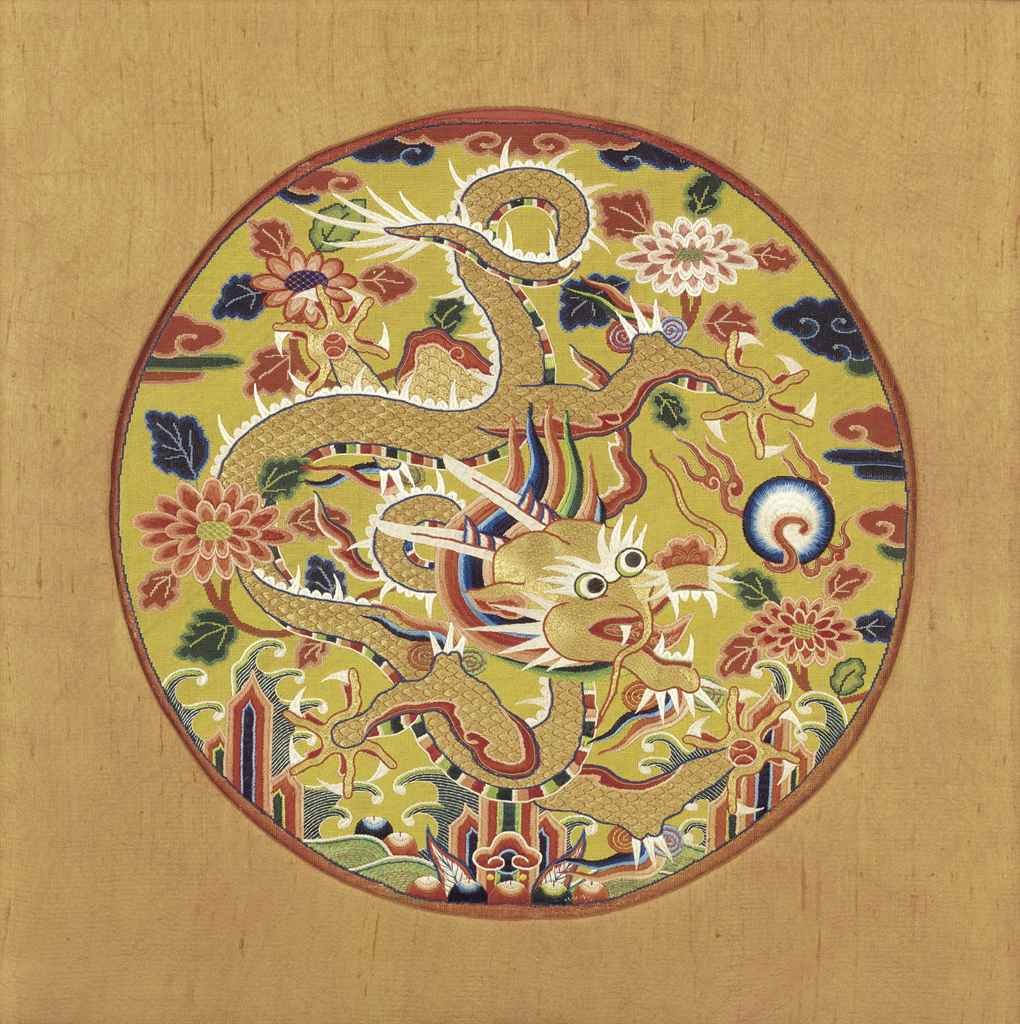




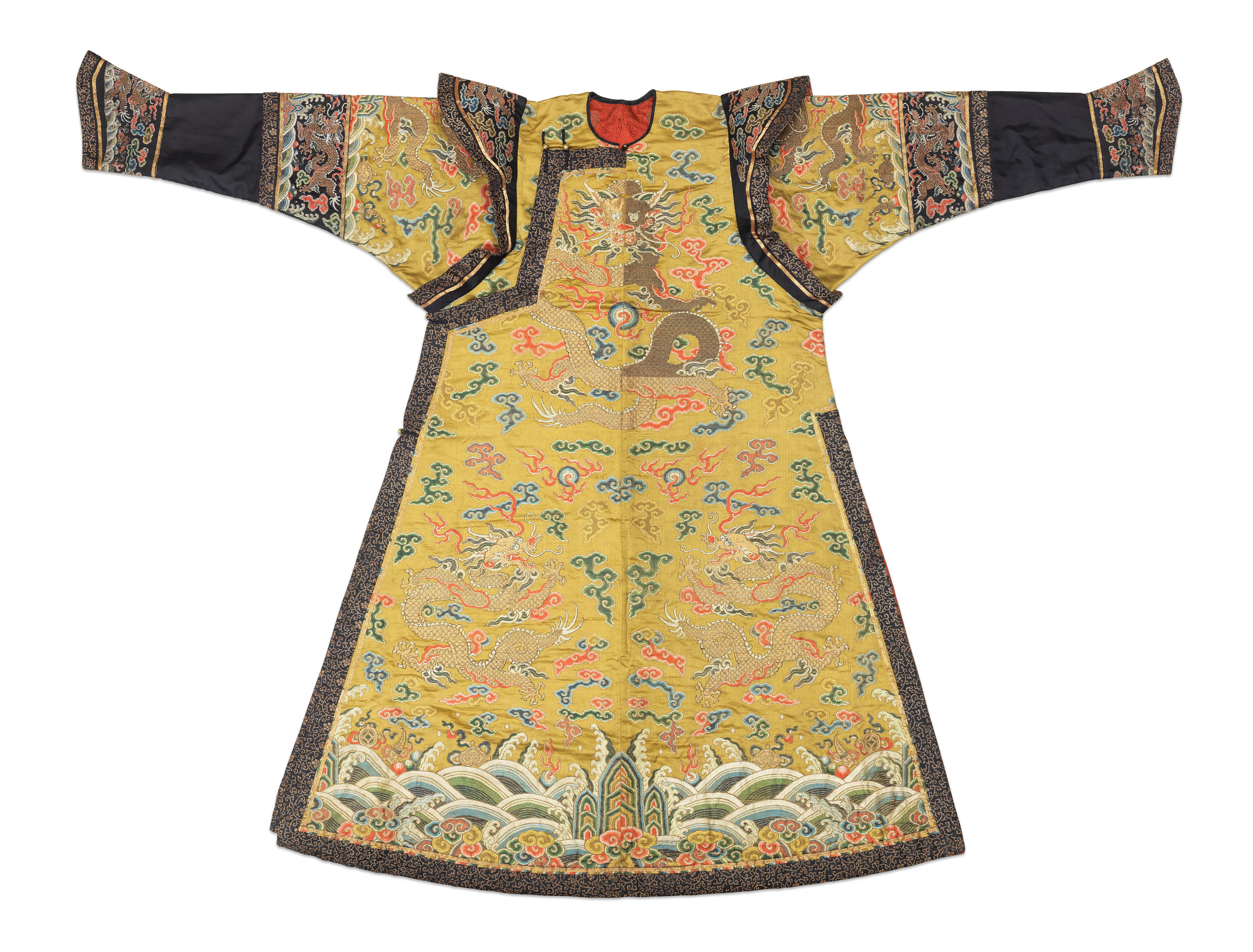

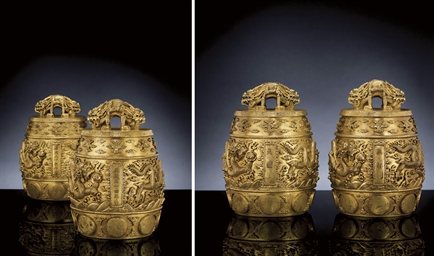

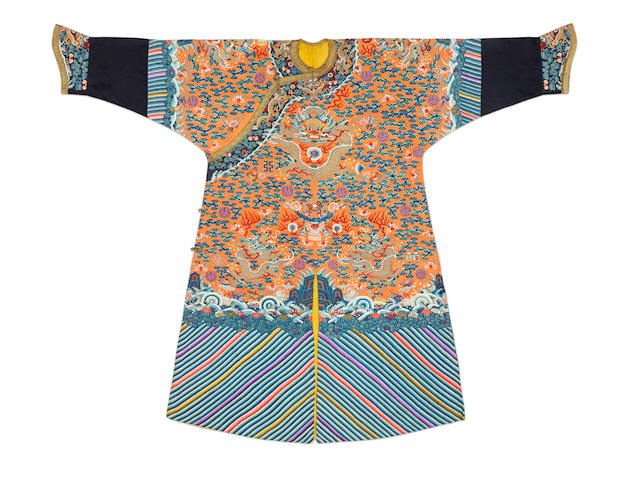
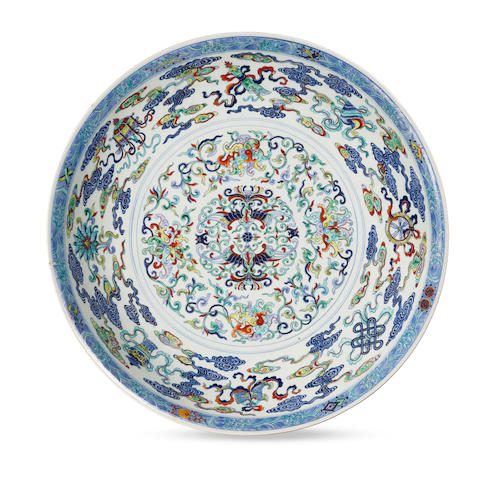


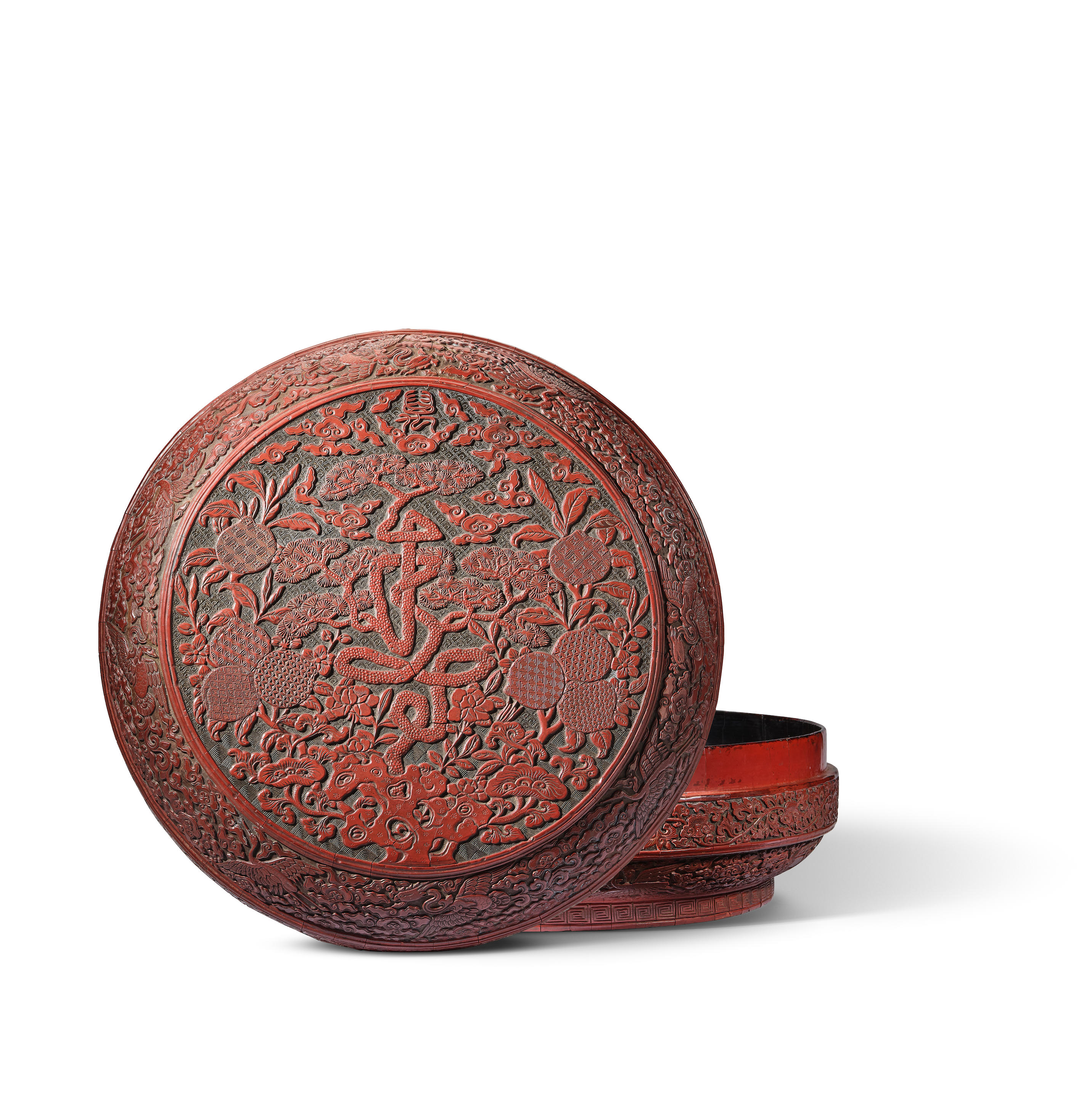

Testen Sie LotSearch und seine Premium-Features 7 Tage - ohne Kosten!
Lassen Sie sich automatisch über neue Objekte in kommenden Auktionen benachrichtigen.
Suchauftrag anlegen